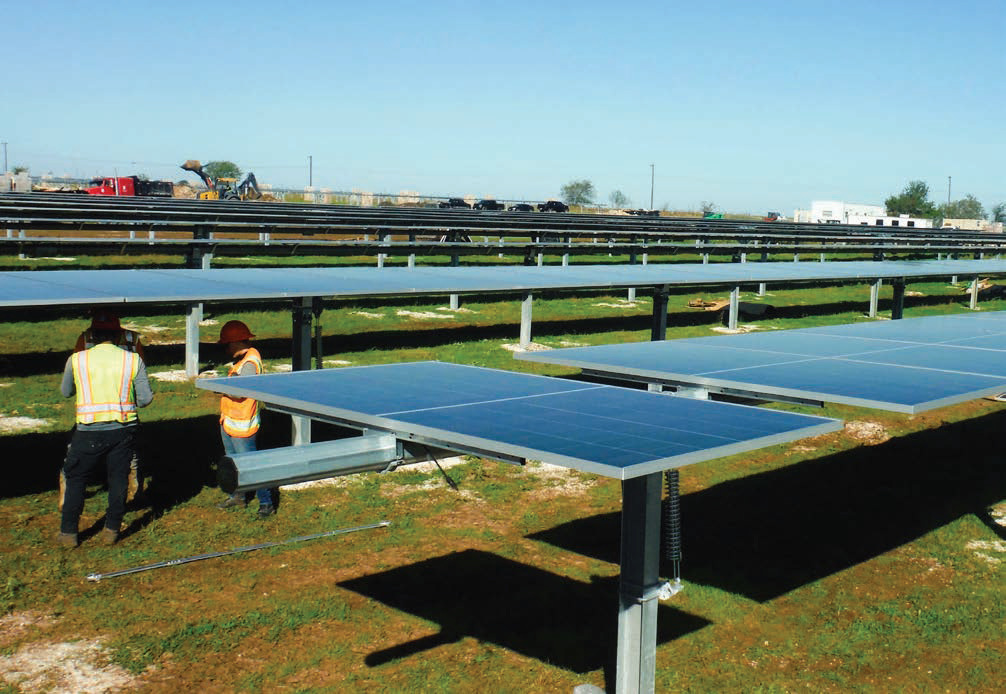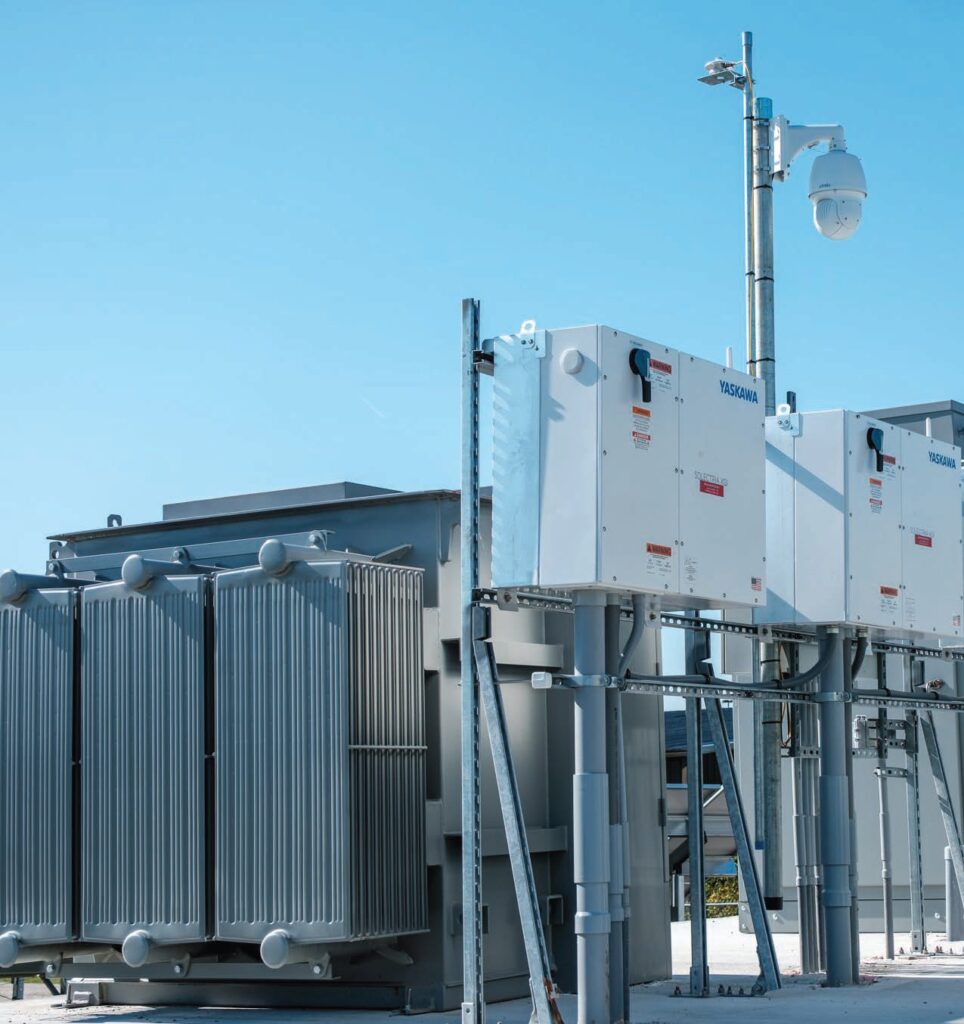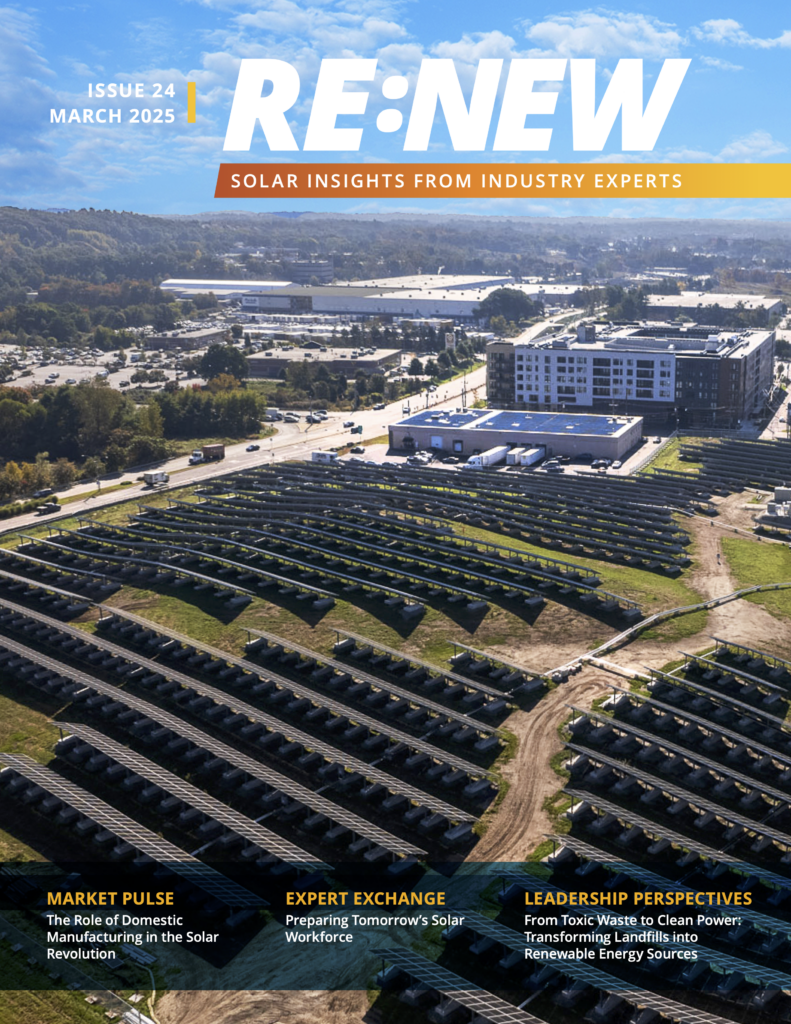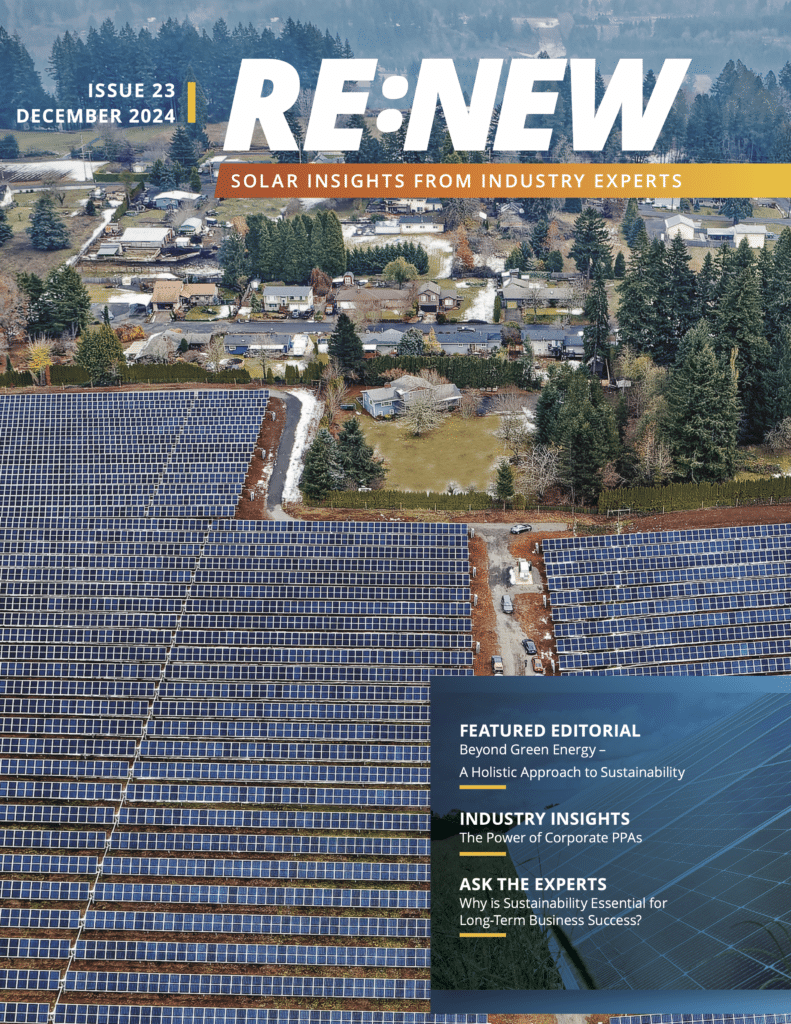In 2023, the solar industry experienced a mix of successes and challenges. President Biden’s temporary moratorium on solar tariffs marked a significant development, with subsequent attempts in Congress to reverse it proving unsuccessful. However, the industry grappled with persistent issues such as interconnection delays, escalating equipment costs and disruptions in supply chains due to a variety of constraints, including the Uyghur Forced Labor Prevention Act (UFLPA). Additionally, like many other sectors, the solar industry faced difficulties in finding skilled workers and promoting diversity within its companies.
Nevertheless, one constant remained clear throughout the year: Solar energy and energy storage continued to play a pivotal role in revitalizing the economy in the aftermath of the COVID-19 pandemic and advancing the global fight against climate change. As we approach the end of 2023, it is worth examining the key highlights of transformative federal and state policies, innovations in technology and design and efforts to promote equity within the solar industry.
The Lightning Rod Effect of the Inflation Reduction Act
Nothing affected our industry in quite the same way as the Inflation Reduction Act (IRA). With the passage of this historic legislation, the federal government allocated an estimated $370 billion to battle climate change and support clean energy transition efforts. More than a year later, our industry is feeling its effects on multiple fronts. The Solar Energy Industries Association (SEIA) reported the IRA led to a commitment of more than $100 billion in new private investment in the U.S. solar and storage markets, which is expected to result in 155 gigawatts (GW) of new solar production capacity and 65 gigawatt hours (GWh) of energy storage capacity. Additionally, more than 51 solar-component manufacturing facilities are being expanded or developed across the country.
The impact on job growth has been particularly impressive. The White House has estimated the IRA’s clean-energy and climate provisions already generated more than 170,000 renewables jobs. States like Arizona, Georgia and Indiana are seeing unemployment drop as solar companies hire workers and construct new facilities. SEIA predicts that industry employment will almost double over the next ten years, from 263,000 to 478,000, with solar manufacturing jobs alone rising to 100,000. And, it asserts the IRA will create 137,000 more jobs over that period when compared with a no-IRA scenario.
A Solar Ecosystem in Equal Parts Frustrating and Inspiring
Lawrence Berkeley National Laboratory reported that at the end of 2022, 947 GW of utility-scale solar power capacity was held up in the interconnection queues across America, half of which included batteries. Mid-year utility-scale solar interconnection costs rose 400 percent for some projects, leading some to be withdrawn. Queue wait times increased as the number of projects grew, with more developers pursuing renewables in the wake of the IRA. Installation in commercial and community solar segments stagnated halfway through the year in some regions in part because of interconnection challenges. In contrast, the U.S. energy storage industry was the big winner for the year. American Clean Power reported that large-scale battery energy storage projects broke quarterly records in the second quarter, and by the end of the third quarter, had already eclipsed the numbers from all of 2022, reaching 4,500 MW installed.
Innovative solar project models also saw significant growth. More solar companies pursued agrivoltaics (the synthesis of farming and solar) to diversify their portfolios and ease barriers to project siting. Intriguing developments in this area included studies exploring best practices around factors like solar-compatible seeds and design techniques, and the multiple benefits of solar grazing to manage onsite vegetation. Though not as developed as the comparable overseas sector, the American floating solar market expanded as developers sought siting alternatives in the face of limited land availability. Another model that grew, particularly in America’s urban areas, was repurposing brownfields and landfills. The deployment of this model played a crucial role in revitalizing economically depressed communities and bringing equity to solar. Finally, a critical factor in solar growth, particularly in large-scale solar deployment, continued to be the impact of innovative technologies like tracking systems and perovskite solar cells.
Many solar companies prioritized diversity when developing the workforce, both for their recruitment and the industry at large. In late 2022, the Interstate Renewable Energy Council reported that the number of Hispanic employees in solar had grown to 22 percent, while women had reached 31 percent of the solar workforce. However, black workers only comprised 9 percent of the solar labor force. The good news is that businesses across multiple sectors are working to attract more people of color and women, something bolstered by SEIA’s Diversity, Equity, Inclusion and Justice (DEIJ) Certification Program. Additionally, the DEIJ program broadened its impact with the addition of programming for military veterans, persons with disabilities, and LGBTQ+ individuals.
Visionary Policies That Promote Growth and Equity in Solar
Policy is one of the most defining elements of the solar ecosystem, particularly at the state level. This year, a host of states, recognizing the benefits of renewables around economic and environmental sustainability, pursued policies that expanded solar and storage deployment. In particular, they sought effective and innovative ways to address equity issues through solar programs and rate design.
2023 also saw several states actively supporting community solar, either expanding on and renewing their initiatives. New Jersey and Maryland made their community solar pilot programs permanent, while NYSERDA relaunched their NY-SUN Inclusive Community Solar Incentive and Expand Solar for All Program. Most encouragingly, Ohio and Michigan moved closer to passing legislation opening community solar markets. Many states looked to increase access for low-income customers through community solar, incentives, and rate-design adjustments. New Jersey, Minnesota and Maryland reserved generous carveouts in their community solar programs for low-to-moderate income (LMI) communities. Other states like Maine, New Mexico, Connecticut and Virginia considered changes or adjustments to electricity rates to be more favorable to low-income customers.
Many states expanded their capacity for solar deployment. Forty-four state entities submitted notices of intent to apply for rooftop and community solar incentive funding through the U.S. Environmental Protection Agency’s $7 billion Solar for All program. Wisconsin regulators allowed a third-party-owned solar project to advance, Maine lawmakers enacted a solar successor program bill, and California looked at bolstering renewables incentives and passed a bill encouraging solar along state highways. Minnesota expanded its already robust solar program by investing an additional $80 million in solar + energy storage incentive programs. At the same time, Colorado broke ground by passing a bipartisan bill that streamlined solar permitting and eased the adoption of the SolarAPP+. A visionary new Maryland law allowed customers to infinitely accrue their excess generation credits.
The need for grid modernization, very much in the news this past year, was also a priority. Several states looked for ways to push utility action around easing interconnection issues and fixing the ailing electric grid. Several major utilities took steps to address grid vulnerabilities and file regular distribution plans in response to recent legislation. Virginia, Michigan and Massachusetts moved forward on grid modernization investments from major utilities (all made in response to new requirements), and Louisiana enacted requirements for utilities to assess grid vulnerabilities and investment needs. California approved incentives for virtual power plants to boost the grid in times of high energy need, while Colorado explored third-party implementation of virtual power plant pilots. Additionally, Massachusetts, Nevada, New Jersey and New York began looking at legislation to boost microgrids, given their potential for improving grid resiliency.
The Boom in Utility Scale
2023 was a record year for utility-scale solar. The sector steadily recovered remarkably from last year’s decline due to uncertainties from the antidumping/countervailing duty tariff fight and supply delays brought by the UFLPA. According to the U.S. Energy Information Administration, developers added 16.8 GW of new utility-scale electric generating capacity to the grid in the first half of the year. They were also predicted to be on track to add 35 GW of capacity by the end of the year. Additionally, SEIA reported the first quarter of 2023 was the best first quarter in industry history, partly because delayed utility-scale solar projects started coming online. A particularly welcome trend was that utility-scale solar deployment continued to be concentrated in “energy communities,” traditionally coal-generating or fossil fuel-based regions, a development bolstered by investment and production tax credits under the IRA.
Technological trends also helped fuel this growth. Many solar firms embraced thin-film modules, partly because their tariff-exempt status made them more readily available. Additionally, the use of trackers in utility-scale solar developments continued in earnest due to their increased efficiency and falling prices. Fixed tilt projects, ones that are simpler to install and cheaper to maintain, tended to be applied only to more challenging sites in the less sunny regions along the East Coast.
Utilities also continued their trend of embracing programs that encourage customers to buy pre-approved solar devices and enroll them in demand-response or energy-efficiency programs. This has been a welcome development for the industry, given that it is a consumer-driven solution that helps create a more secure and stable energy infrastructure. Many in the sector also viewed virtual power plants as a go-to solution for addressing reliability and resiliency challenges.
Moving Forward into a Promising 2024,
RE+ 2023, North America’s largest clean energy conference, broke records. It brought together 40,000 attendees and featured more than 1,350 exhibitors from around the world. According to the consultancy firm DNV, the United States has $12 trillion in potential investment opportunities for its grid infrastructure and renewables through 2050, depending on the annual growth rate of grid capacity. These phenomena are true indicators of just how significant an economic and environmental engine the solar and storage industry has become over the past 12 months.
America’s electric grid needs an overhaul, our marginalized communities need a more significant portion of the renewables pie, and our businesses need a robust, well-trained labor force. But we are more than up to the task. Our industry will continue to pursue the policies and projects that bring us closer to achieving our nation’s clean energy goals and ensuring that the benefits of renewable energy are felt by all in 2024 and beyond.
More Recent Blog Posts
Building an Enduring Solar Legacy in America’s Next Energy Era
June 9, 2025
Rick Berube · 2 min read
Beyond Panels: How The Catholic University of America Cultivates Holistic Sustainability Through Solar
May 13, 2025
John Finnerty · 4 min read
Celebrating 20 Years of Transforming the Energy Landscape
December 12, 2024
Scott Wiater · 5 min read
Honoring Our Past To Build Our Future
November 18, 2024
Scott Wiater · < 1 min read
Most Popular Blog Posts
How To Create A Complete Commercial PV Design Package
CJ Colavito · 6 min read
Navigating Solar Policy in Uncertain Times: Standard Solar’s October Policy Brief
Trevor Laughlin · 6 min read
Neville Williams: Standard Solar’s Standard Bearer
Tony Clifford · 6 min read
Building an Enduring Solar Legacy in America’s Next Energy Era
Rick Berube · 6 min read






Share